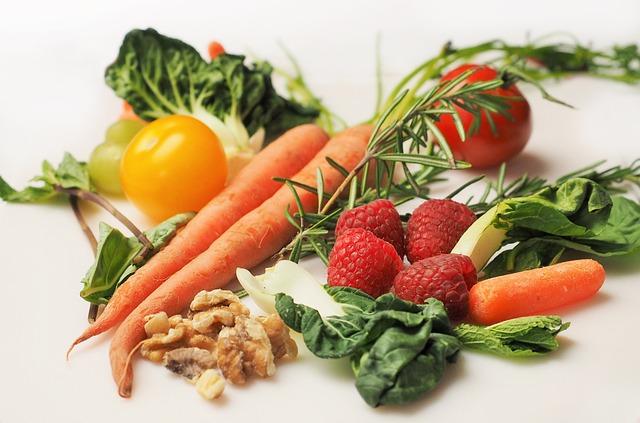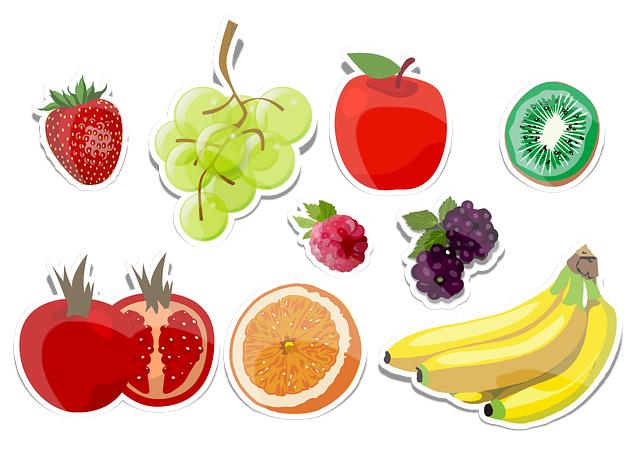How to Improve School Lunches Essay: Expert Strategies
In a world where quick and convenient often trumps nutritious and satisfying, school lunches are often given the short end of the stick. But fear not, there are expert strategies that can revolutionize the way we approach school lunches. From boosting health and flavor to increasing student satisfaction, let’s dive into how to improve school lunches with simple yet effective tips from the pros.
Contents
- Healthy Food Choices for School Lunches
- Engaging Students in the Lunch Menu Selection Process
- Incorporating More Fruits and Vegetables in School Meals
- Balancing Nutritional Value and Cost Efficiency in School Lunch Programs
- Utilizing Local Ingredients to Enhance the Quality of School Lunches
- The Importance of Properly Training School Cafeteria Staff
- Implementing Creative Ways to Reduce Food Waste in School Cafeterias
- Providing Nutrition Education Opportunities for Students and Staff
- Collaborating with Parents and Health Professionals to Improve School Lunches
- The Way Forward
Healthy Food Choices for School Lunches
When it comes to making , it’s important to prioritize foods that will provide the necessary nutrients to fuel your child’s day. Here are some expert strategies to help you improve your child’s school lunches:
- Include a variety of fruits and vegetables: Pack a colorful array of fruits and veggies to ensure your child gets a range of vitamins and minerals.
- Choose whole grains: Opt for whole grain bread, pasta, and rice to provide lasting energy and keep your child fuller for longer.
- Incorporate lean proteins: Include sources of lean protein such as chicken, turkey, tofu, or beans to help build and repair tissues.
- Avoid sugary drinks and snacks: Opt for water or milk instead of sugary beverages, and choose snacks like nuts or yogurt over candy or chips.
| Food Group | Serving Size |
|---|---|
| Fruits | 1 cup |
| Vegetables | 1/2 cup |
| Whole grains | 1 oz |
| Lean proteins | 3 oz |

Engaging Students in the Lunch Menu Selection Process
One effective way to engage students in the lunch menu selection process is to involve them in taste testing sessions. By allowing students to sample different food options and provide feedback, they will feel more invested in the menu choices. This can help ensure that the lunches served meet the preferences of the majority of students.
Another strategy is to create a student-led committee that is responsible for brainstorming menu ideas, researching new recipes, and providing input on current menu offerings. This not only gives students a sense of ownership over their lunch choices but also teaches valuable leadership and decision-making skills.
Additionally, incorporating interactive elements into the lunch selection process can make it more engaging for students. For example, hosting a “Build Your Own Lunch” day where students can choose from a variety of ingredients to create their own meal can be a fun and educational experience. This hands-on approach can help students understand the importance of balanced nutrition and variety in their diet.
Overall, by involving students in the lunch menu selection process, schools can improve the quality of their meals, increase student satisfaction, and promote healthy eating habits among the student body. With these expert strategies in place, schools can create a more inclusive and enjoyable dining experience for all students.
Incorporating More Fruits and Vegetables in School Meals
When it comes to improving school lunches, one of the key strategies is to focus on incorporating more fruits and vegetables. By offering a variety of colorful and nutritious options, students can benefit from essential vitamins, minerals, and fiber needed for optimal growth and development.
One effective way to encourage students to eat more fruits and vegetables is by making them visually appealing. Try incorporating fun shapes, colors, and textures to make the food more enticing. Additionally, offering a selection of fresh, locally sourced produce can also help enhance the overall flavor and quality of school meals.
Another approach to incorporating more fruits and vegetables in school lunches is by involving students in the meal planning process. By allowing them to provide input and feedback on menu options, they may be more willing to try new and healthier foods. Additionally, incorporating fruits and vegetables into popular dishes, such as smoothies, salads, and wraps, can also make them more appealing to students.
In conclusion, by implementing these expert strategies for , educators can help promote healthy eating habits among students and improve overall well-being. By making nutritious food options more accessible and appealing, schools can play a crucial role in shaping the eating habits of the next generation.
Balancing Nutritional Value and Cost Efficiency in School Lunch Programs
School lunch programs play a crucial role in providing students with the necessary nutrition to fuel their bodies and minds throughout the school day. However, finding the right balance between nutritional value and cost efficiency can be a challenging task for schools. To address this issue, schools can implement the following expert strategies:
- Menu Planning: Create a diverse menu that includes a variety of fruits, vegetables, whole grains, and lean proteins to ensure students receive a balanced meal.
- Local Sourcing: Work with local farmers and suppliers to source fresh, seasonal ingredients at a lower cost, while supporting the local community.
- Meal Prep Strategies: Implement batch cooking and meal prep techniques to maximize efficiency and minimize waste in the kitchen.
| Key Points | Benefits |
|---|---|
| Menu Planning | Provides students with a balanced meal |
| Local Sourcing | Supports the local community and lowers costs |
| Meal Prep Strategies | Maximizes efficiency in the kitchen |
By incorporating these strategies into school lunch programs, schools can offer nutritious meals to students without compromising on cost efficiency. It is essential to prioritize the health and well-being of students while also being mindful of budget constraints.

Utilizing Local Ingredients to Enhance the Quality of School Lunches
One effective way to enhance the quality of school lunches is by utilizing local ingredients. By incorporating fresh, locally sourced produce and proteins into school meals, students can enjoy meals that are not only nutritious but also flavorful. Here are some expert strategies for improving school lunches through the use of local ingredients:
- Support Local Farmers: Building relationships with local farmers and producers can ensure a consistent supply of high-quality ingredients for school lunches.
- Seasonal Menu Planning: Creating menus that align with seasonal availability of ingredients can help maximize freshness and flavor in school meals.
- Hands-On Learning Opportunities: Involving students in growing, harvesting, and preparing local ingredients can educate them about the importance of fresh, sustainable food choices.

The Importance of Properly Training School Cafeteria Staff
When it comes to improving the quality of school lunches, one crucial aspect that often gets overlooked is the training of cafeteria staff. Proper training is essential for ensuring that students are provided with nutritious and appetizing meals that adhere to food safety standards. Here are some expert strategies to help school cafeteria staff elevate their skills and deliver high-quality meals:
- Menu Planning: Train cafeteria staff on how to plan balanced menus that meet nutritional guidelines while also appealing to students’ tastes.
- Food Safety: Provide comprehensive training on proper food handling, storage, and preparation techniques to prevent foodborne illnesses.
- Culinary Skills: Offer workshops and classes to enhance cafeteria staff’s cooking skills and creativity in preparing diverse dishes.
Ensuring that school cafeteria staff are well-trained not only benefits the students’ health and well-being but also contributes to a positive dining experience. By investing in the training of cafeteria staff, schools can significantly improve the overall quality of their lunch programs.
| Students’ health and well-being |
| Positive dining experience |

Implementing Creative Ways to Reduce Food Waste in School Cafeterias
is essential for promoting sustainability and efficiency in our educational institutions. By adopting expert strategies, schools can significantly improve their lunch programs and contribute to a healthier environment. One effective approach is to involve students in the process, empowering them to take ownership of their meals and make mindful choices about food consumption.
One innovative idea is to introduce a ”food swap” program, where students can exchange items they do not want to eat with others who are interested in trying something new. This not only reduces food waste but also encourages a sense of community and diversity in the cafeteria. Additionally, implementing portion control measures can help minimize overproduction and ensure that students are only served what they can finish.
Another creative solution is to organize food rescue initiatives, where leftover food from lunch periods is collected and donated to local charities or food banks. This not only reduces waste but also serves a greater social purpose by helping those in need. By incorporating these expert strategies into school lunch programs, we can make a positive impact on both the environment and our communities. Together, we can create a more sustainable future for our schools and beyond.
Providing Nutrition Education Opportunities for Students and Staff
When it comes to improving school lunches, there are several expert strategies that can make a significant impact on the nutrition education opportunities for students and staff. One key approach is to involve students in the decision-making process by allowing them to provide input on menu options and preferences. This not only empowers students but also helps to ensure that the school lunches are appealing and nutritious.
Another important strategy is to incorporate nutrition education into the curriculum, providing students with the knowledge and skills they need to make healthy food choices. By offering classes or workshops on topics such as portion control, reading food labels, and meal planning, schools can help students develop lifelong habits that promote health and wellness.
Furthermore, schools can also collaborate with local farmers and food suppliers to source fresh, seasonal ingredients for school lunches. This not only supports the local economy but also provides students and staff with access to high-quality, nutrient-rich foods. By prioritizing locally sourced ingredients, schools can enhance the nutritional value of their meals and promote sustainable food practices.
In conclusion, by implementing these expert strategies, schools can improve the quality of their school lunches and create meaningful nutrition education opportunities for students and staff. By empowering students, integrating nutrition education into the curriculum, and sourcing fresh, local ingredients, schools can make a positive impact on the health and well-being of their school community.

Collaborating with Parents and Health Professionals to Improve School Lunches
One of the most effective ways to improve school lunches is by collaborating with parents and health professionals. By combining the input and expertise of both groups, schools can create healthier and more appealing lunch options for students. Here are some expert strategies to enhance school lunches through collaboration:
– **Parent Involvement:** Encourage parents to provide feedback on current lunch offerings and suggest healthier alternatives. Hosting parent focus groups or surveys can help gather valuable insights on students’ preferences and dietary needs.
– **Health Professional Consultation:** Work with nutritionists or dietitians to develop nutritious and balanced meals that meet the dietary guidelines. These professionals can offer guidance on portion sizes, food groups, and ingredient choices to ensure that school lunches are both delicious and nutritious.
– **Menu Planning:** Collaborate with parents and health professionals to create a rotating menu of healthy lunch options. Consider incorporating a variety of fruits, vegetables, whole grains, and lean proteins to provide students with a well-rounded meal each day.
By working together with parents and health professionals, schools can make significant improvements to their lunch programs and promote healthier eating habits among students. With the right strategy and collaboration, schools can set students up for success both in and out of the classroom.
The Way Forward
In conclusion, improving school lunches is a crucial step in ensuring the health and well-being of our students. By implementing expert strategies such as incorporating more fresh fruits and vegetables, reducing processed foods, and involving students in the meal planning process, we can create a positive impact on their overall nutrition and academic performance. Remember, small changes can lead to big results. Let’s work together to make our school lunches healthier and more delicious for our future generations. Thank you for reading, and let’s strive for nutritious and satisfying meals for all students.







